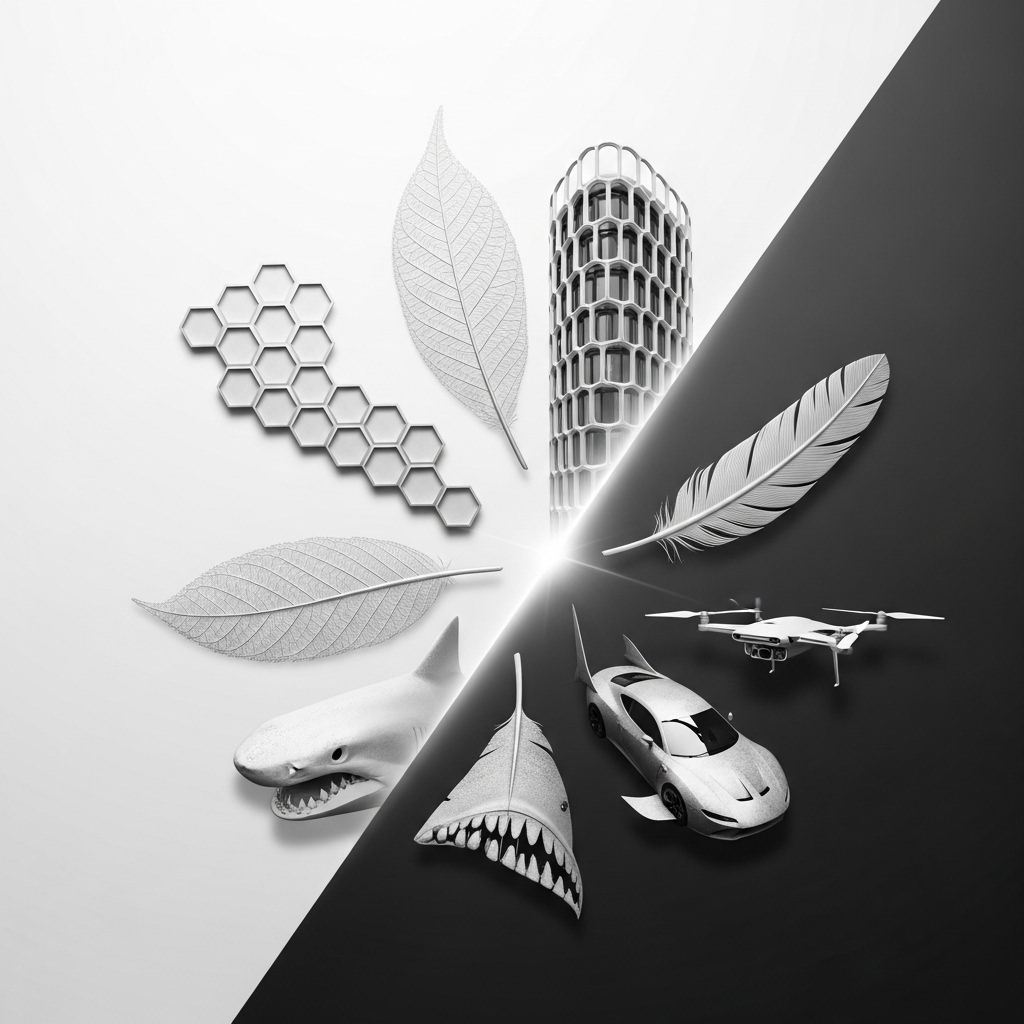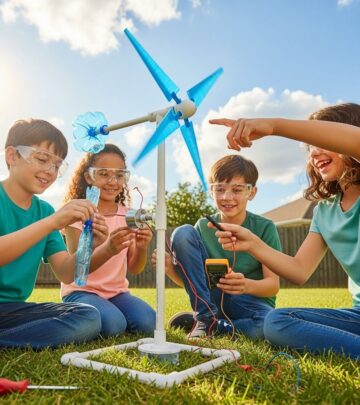10 Fascinating Examples of Biomimicry in Modern Design
Discover how nature inspires innovative solutions in architecture, technology, and everyday life through groundbreaking examples of biomimicry.

Biomimicry is rapidly emerging as a cornerstone in sustainable design and innovation. Drawing direct inspiration from the natural world, architects, engineers, and designers are replicating biological strategies and forms—leading to solutions that are not only efficient but environmentally friendly.
What Is Biomimicry?
Biomimicry is the science and art of examining and mimicking nature’s best ideas to solve human problems. By emulating systems, forms, and processes found in flora, fauna, and entire ecosystems, designers create products, buildings, and technologies that are sustainable, resilient, and harmonious with the environment.
- Form biomimicry: Mimics the shape or structure of natural objects (e.g., aerodynamic trains shaped like bird beaks).
- Process biomimicry: Uses natural processes (e.g., self-cleaning surfaces inspired by lotus leaves).
- Ecosystem biomimicry: Imitates entire ecosystem functions (e.g., closed-loop water and waste systems).
The following examples illustrate the myriad ways in which biomimicry is transforming our built environment, technologies, and tools for a more eco-smart future.
1. The Eastgate Centre: Ventilation Inspired by Termite Mounds
Location: Harare, Zimbabwe
Inspiration: African termite mounds
Key Innovation: Self-regulating building ventilation and temperature control
Termite mounds maintain constant internal temperatures regardless of external climate by ingeniously managing air flow. Engineers applied this principle to the Eastgate Centre, a mid-rise office and shopping complex. The building uses a passive ventilation system: air drawn in from the outside passes through underground ducts for pre-cooling, rises through the building—a process that naturally regulates interior temperatures. This system reduces energy consumption by as much as 90% compared to similarly sized conventional buildings.
- Temperature is passively regulated, requiring almost no air conditioning.
- Additional eco-friendly features include rainwater collection and solar water heating.
2. The Gherkin: Architecture Modeled on Deep-Sea Sponges
Location: London, UK
Inspiration: Venus flower basket sponge (Euplectella aspergillum)
Key Innovation: Double-glazed glass façade and lattice structure
The Gherkin (30 St Mary Axe) features a striking double-hooped glass structure that takes its cues from the lattice skeleton of the Venus flower basket sponge. The building’s outer skin, composed of double glazing with interstitial air, offers thermal insulation, while its aerodynamic shape efficiently deflects wind loads. This innovative approach ensures natural lighting, reduces energy use, and minimizes the building’s environmental footprint.
- The lattice design gives structural strength with minimal materials.
- Natural ventilation shafts (inspired by sponge chimneys) cut overall energy needs.
3. The Eden Project: Plant Cuticle-Inspired Domes
Location: Cornwall, UK
Inspiration: Leaf cuticle (protective layer of plant leaves)
Key Innovation: Lightweight geodesic domes using ETFE
Beneath the Eden Project’s massive transparent domes, thousands of plant species thrive. The material used for these domes, ETFE (ethylene tetrafluoroethylene), is not only ultra-light and durable but also mimics the natural epidermal cuticles of plants.
- Resists UV light and harsh weather, extending the lifespan of the structure.
- Maximizes light transmission to plants, just as the leaf cuticle allows essential light — but blocks excessive evaporation and UV damage.
4. Gardens by the Bay: Trees Redesigned for Urban Sustainability
Location: Singapore
Inspiration: Ecological functions of actual trees and natural cycles
Key Innovation: Supertree vertical gardens and climate-adapted conservatories
Gardens by the Bay features iconic vertical structures called Supertrees (25–50 meters high) that replicate the features of mature rainforest trees. Integrating solar panels (mimicking photosynthesis), collecting rainwater, and improving air quality, these structures are a working demonstration of urban sustainability. Complementing them, the Cooled Conservatories deploy energy-efficient glass, natural ventilation, and misting systems based on rainforest microclimates to re-create diverse environments within the city.
- Supertree canopies offer vital shading and act as vertical gardens.
- Advanced climate controls utilize natural ventilation and energy recovery, much as ecosystems do.
5. Velcro: Nature’s Hook-and-Loop Genius
Inspiration: Burdock plant burrs
Key Innovation: The first reusable, hook-and-loop fastener for clothing and more
After taking his dog for a walk in 1941, Swiss engineer George de Mestral noticed how burdock burrs clung to fur. Studying them under a microscope, he observed tiny hooks, sparking the 1948 invention of Velcro. Now ubiquitous—from shoes and NASA spacesuits to everyday cable management—Velcro’s ease-of-use and reusability reflect the resilient efficiency of simple, natural processes we might otherwise overlook.
6. Bullet Trains and the Kingfisher’s Beak
Location: Japan
Inspiration: Kingfisher’s streamlined beak
Key Innovation: High-speed, quiet, and aerodynamically efficient train noses
The classic Japanese bullet train (Shinkansen) initially faced noise issues at high speeds, especially when emerging from tunnels—until engineers mimicked the kingfisher’s beak. This bird dives into water with hardly a splash, thanks to its unique shape. The redesigned train nose cuts wind resistance and dramatically lowers tunnel boom noise, while reducing energy consumption by up to 15% and increasing speed.
7. Self-Cleaning Surfaces: Lessons from the Lotus Leaf
Inspiration: Lotus flower’s micro-textured leaves
Key Innovation: Hydrophobic (water-repellent), self-cleaning coatings
The leaf of the lotus plant repels water due to microscopic bumps and waxy coatings. Water drops bead and roll off, carrying dirt away. Engineers have replicated this effect, creating self-cleaning coatings for glass windows, solar panels, and wall paint—reducing cleaning needs, bacteria buildup, and minimizing the use of harsh chemicals.
8. Gecko-Inspired Adhesives
Inspiration: Gecko’s nano-structured foot pads
Key Innovation: Reusable, residue-free adhesive tapes and gripping tools
Geckos can run up walls and hang from ceilings, thanks to millions of tiny hair-like setae on their feet that generate van der Waals forces. Biomimetic adhesives now mimic this ability. Commercial “gecko tape” can support significant weights, and robotics use similar gripping pads to manipulate objects in zero gravity and medical devices.
9. Pangolin-Patterned Protective Gear
Inspiration: Pangolin scales (keratin overlapping scales)
Key Innovation: Flexible, impact-resistant body armor and backpacks
Pangolins are mammals covered with tough, flexible scales that can fold for compactness or expand to form nearly impenetrable armor. Designers are adapting this pattern to create lightweight and flexible body armor, as well as backpacks designed to protect fragile contents. The resulting gear is durable yet flexible, inspired by one of nature’s best defenses.
10. Energy Smart Building Design: Forest Canopy and Silk Tree Park
Forest Canopy Designs (like Beijing’s Forest of Knowledge Library) and urban parks often mimic actual trees for both form and function. Examples include roofs with sun-shading “leaves” (solar panels), natural ventilation, and rainwater harvesting—emulating how forests moderate microclimates and store water. In Tehran, Silk Tree Park’s curving canopy structures provide ideal shaded spaces that support comfort and social interaction, specifically tailored for deaf and hard-of-hearing users by facilitating visual communication and a sense of safety.
Comparative Table: Biomimicry Examples and Their Natural Inspirations
| Biomimicry Example | Nature’s Inspiration | Key Human Application |
|---|---|---|
| Eastgate Centre | Termite mounds | Passive ventilation and temperature control |
| The Gherkin | Venus flower basket sponge | Wind-tolerant, energy-efficient structure |
| Eden Project | Plant leaf cuticle | Durable, UV-resistant, light-transmitting domes |
| Gardens by the Bay | Whole-tree ecosystem | Rainwater cycling, solar energy, urban cooling |
| Velcro | Burdock burrs | Reusable fasteners |
| Bullet Train | Kingfisher beak | Aerodynamic, quieter high-speed trains |
| Self-Cleaning Surfaces | Lotus leaves | Stain-resistant glass, coatings, textiles |
| Gecko Tape | Gecko feet | Reusable, residue-free adhesive |
| Pangolin-Inspired Gear | Pangolin scales | Flexible, durable armor and carrier design |
| Forest Canopy Architecture | Tree canopy | Shading, solar harvesting, rain management |
Why Biomimicry Matters in Sustainability
The philosophy of biomimicry emphasizes aligning human-made solutions with the time-tested, efficient models found in the natural world. Whether it’s conserving energy, reducing waste, or ensuring longevity, biomimicry encourages us to shift from extractive to regenerative design.
- Reduces energy and resource usage by leveraging nature’s efficiencies.
- Minimizes environmental impact through non-toxic, sustainable processes.
- Improves well-being within the built environment by echoing natural forms and systems.
Frequently Asked Questions (FAQs)
Q: What is biomimicry in simple terms?
A: Biomimicry is the practice of studying nature’s best ideas and mimicking them to create better designs, products, and technologies for people.
Q: How is biomimicry applied in architecture?
A: In architecture, biomimicry is used to create buildings and structures that emulate natural processes, such as passive cooling (termite mounds), shade and energy production (tree canopies), and water collection (cacti or rainforest systems).
Q: Can biomimicry help fight climate change?
A: Yes, by improving efficiency, reducing reliance on fossil fuels, and promoting closed-loop, nature-like systems, biomimicry can play a vital role in climate change mitigation.
Q: Are there consumer products based on biomimicry?
A: Absolutely. Everyday examples include Velcro, self-cleaning glass and paint, gecko-inspired adhesive tapes, and aerodynamic vehicles inspired by animals and plants.
Q: What’s the future of biomimicry?
A: Biomimicry continues to influence new fields such as regenerative agriculture, green chemistry, robotics, and urban planning. As designers increasingly acknowledge nature as the ultimate innovator, solutions inspired by ecosystems will continue to reshape our world—and our impact on it.
References
- https://www.theoverview.art/biomimicry-in-architecture-examples/
- https://www.learnbiomimicry.com/blog/best-biomimicry-examples
- https://thespaces.com/biomimicry-explore-buildings-that-are-shaped-like-trees/
- https://www.runforplanet.org/treebiomimicry/
- https://biomimicry.net/the-buzz/resources/wireds-think-like-tree-video-series-hosted-janine-benyus/
- https://www.youtube.com/watch?v=sf4oW8OtaPY
Read full bio of Sneha Tete












